In the capital, after the dissolution of the Budapest Székesfővárosi Közlekedési Részvénytársaság (BSzKRt) in 1949, a separate company operated the tram and bus network, as well as the suburban railways, the unified BKV was established only in 1968. A total of 130 tickets, passes and certificates were valid on the various routes. The system was not only non-transparent but also loss-making, with state aid amounting to 600 million HUF a year. At the capital, this situation was seen as unsustainable, and in 1966, it was decided to introduce a new fare system.
One element of this was the introduction of routes without ticket inspectors. Inspectors worked on buses and trams at the time, and they were already travelling on the vehicle: buses and trams had to be boarded at the back door, tickets were checked there, and it was also possible to buy from them. This system was intended to be abolished not only because it was unfavourable to passenger traffic, but also seemed to be an appropriate solution to address the labour shortage at the time.
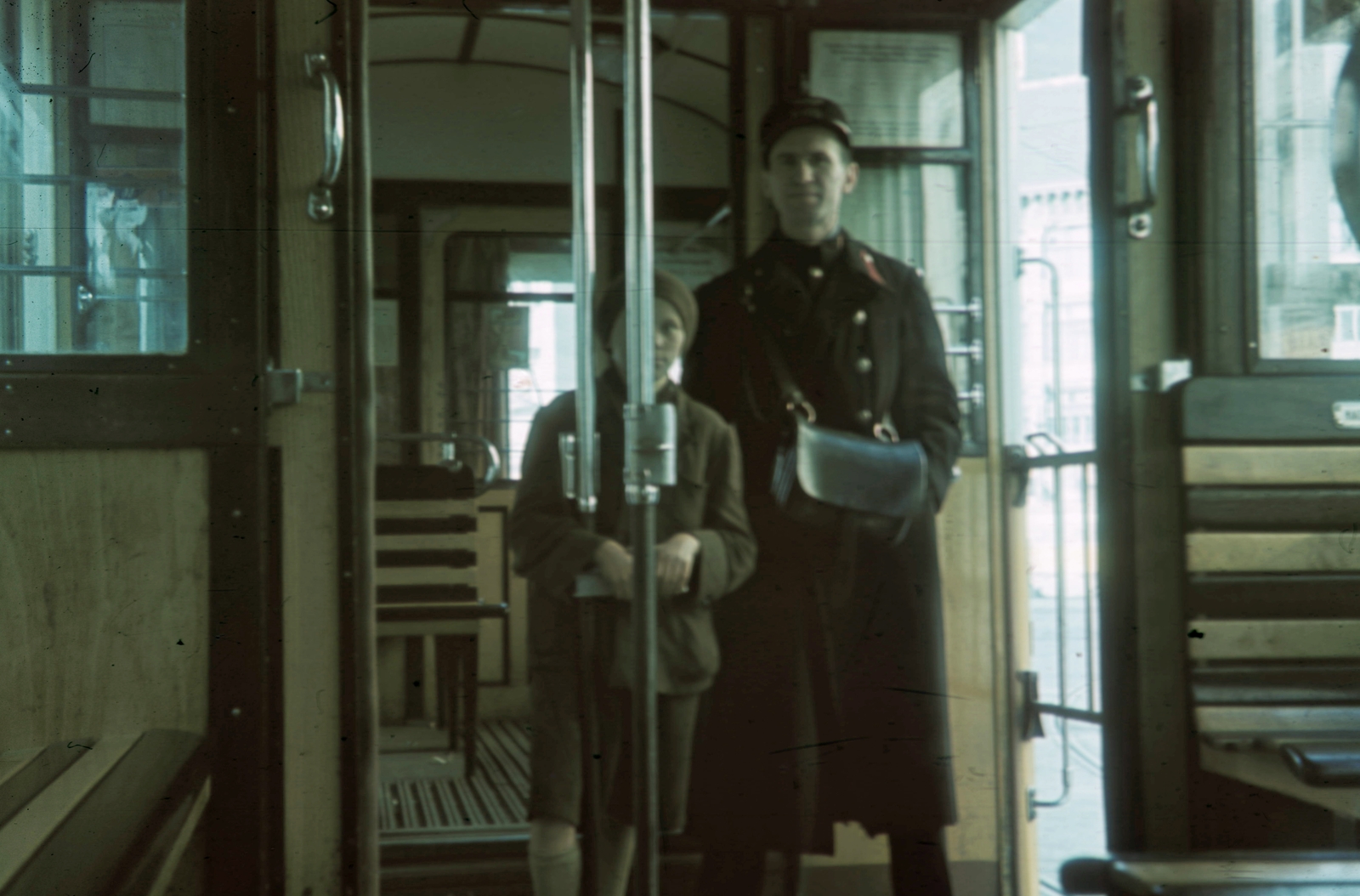
Ticket inspector in 1940. Ticket inspectors travelling on vehicles have been a major part of public transport for decades (Photo: Fortepan/No.: 20785)
Another element of the new system was to increase ticket prices in order to halve the level of state support. The biggest change was the abolition of transfer tickets and double fare at night. The issue of Népszabadság on 19 April 1966 wrote about the introduction of the system:
“(...) the new ticketing system (...) will take effect on Friday, 1 July, from 0 o'clock on the Budapest tram, trolleybus, bus and suburban railway lines, as well as on the vehicles of the capital's car taxi and the capital's shipping company. At the same time, all currently valid tickets, passes and travel documents will expire. Pre-purchased tickets and weekly passes are repurchased.”
The officials of the City Council sought to ensure that daily commuters, retired people and students received a discount. The article already quoted wrote:
“Under the age of six, children can travel on all means of public transport free of charge, accompanied by an adult who has a valid ticket or pass. Student passes can be exchanged by full-time students with a school certificate who do not have an independent salary. Senior citizens can exchange a monthly pension pass for their identity card, as are the disabled who are unable to work, the blind and the deaf-mute.”
Originally, the new system would have come into force on 1 June 1966 but was postponed by one month due to school breaks, so it was introduced from 1 July.
What did the new ticket system look like 55 years ago? Uniform line tickets were introduced on trams, trolleybuses and suburban railway lines (within the administrative line of the capital), which cost 1 forint. If someone exchanged a monthly pass with an ID photo, they had to pay 45 forints for the tram pass, and students and pensioners could buy it for 20 forints.
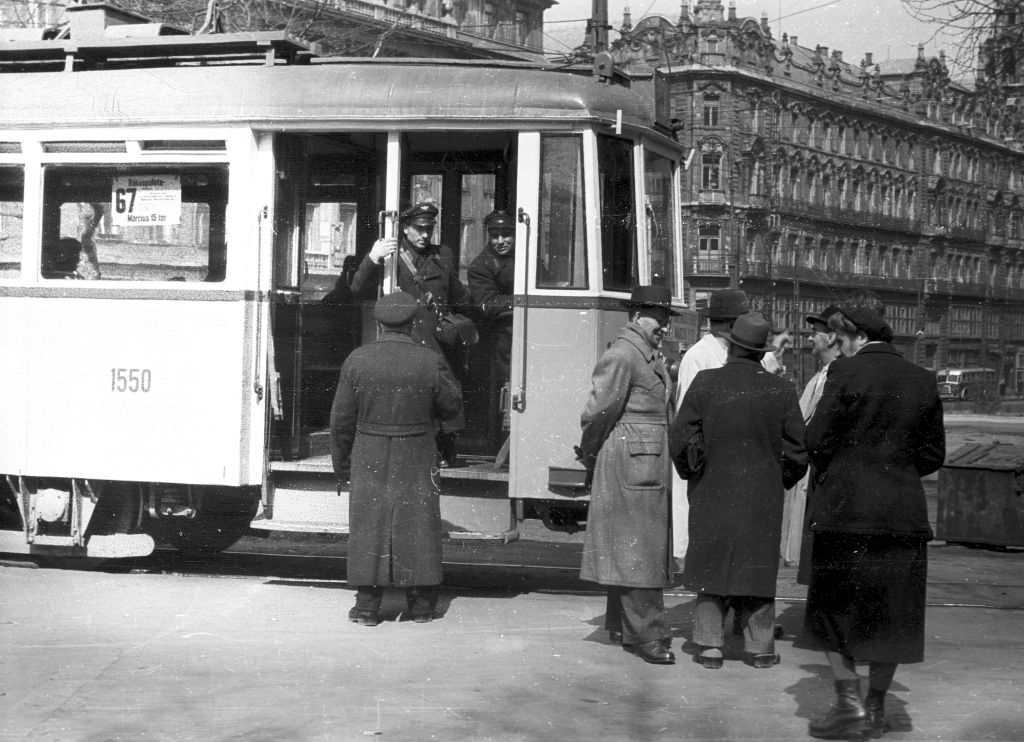
Ticket inspectors also travelled on the trams. The picture was taken in 1960 at the tram terminal on 15 March Square (Source: Fortepan/No.: 101325)
The ticket price for the cogwheel was 1 forint 50 fillér, but here there was a return ticket, which cost 2 forints 50 fillér. Passengers could buy a pass with a photo for 30 HUF and a discounted pass for 15 HUF. At the suburban railways, the ticket was 1 forint, but beyond the administrative border, separate fares were set, ranging from 1 to 8 forints, depending on the zones.
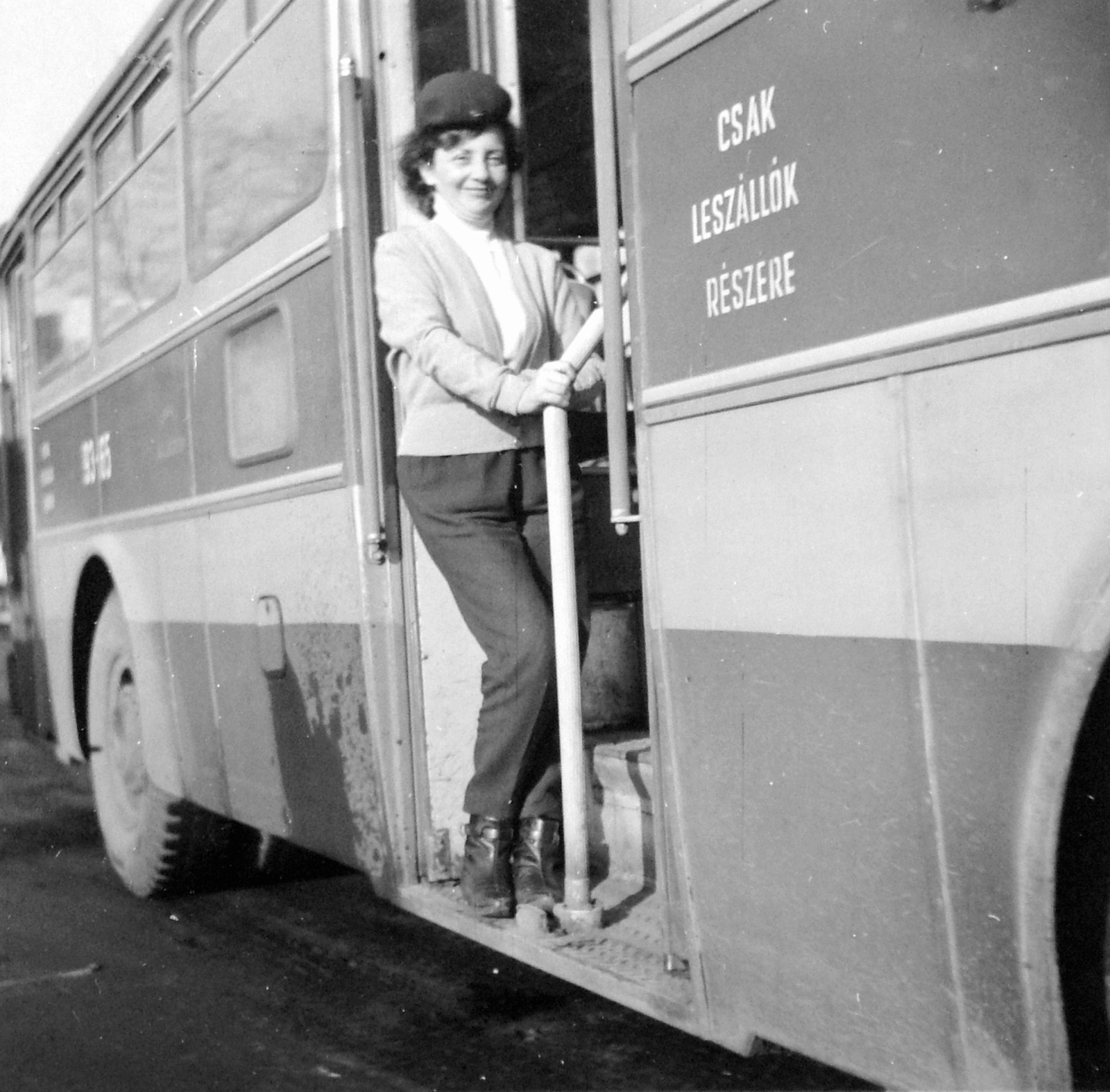
Vehicles could only be boarded in the back, where the ticket inspector was sitting (Source: Fortepan/No.: 6482)
The bus ticket cost 1 forint 50 fillér. There was no separate bus pass, the combined pass - which was valid within the capital - cost 110 forints. There was actually a significant price reduction here because previously the combined pass could be bought for 200 forints. It was also possible to buy a one-route pass for thirty-one bus services, for 50 forints. In comparison, according to the data of the Hungarian Central Statistical Office (KSH), in 1966 the average monthly salary was 1,856 HUF.
The creation of the new five-year passes with photos was also aided by the relocation of photographer companies to larger workplaces - two of which were the Budapest Photo Company and the co-operative Fényszöv - and the finished passes were even delivered home.
By 1 July, 950,000 passes had been issued, although most of them came from cheaper tram passes.
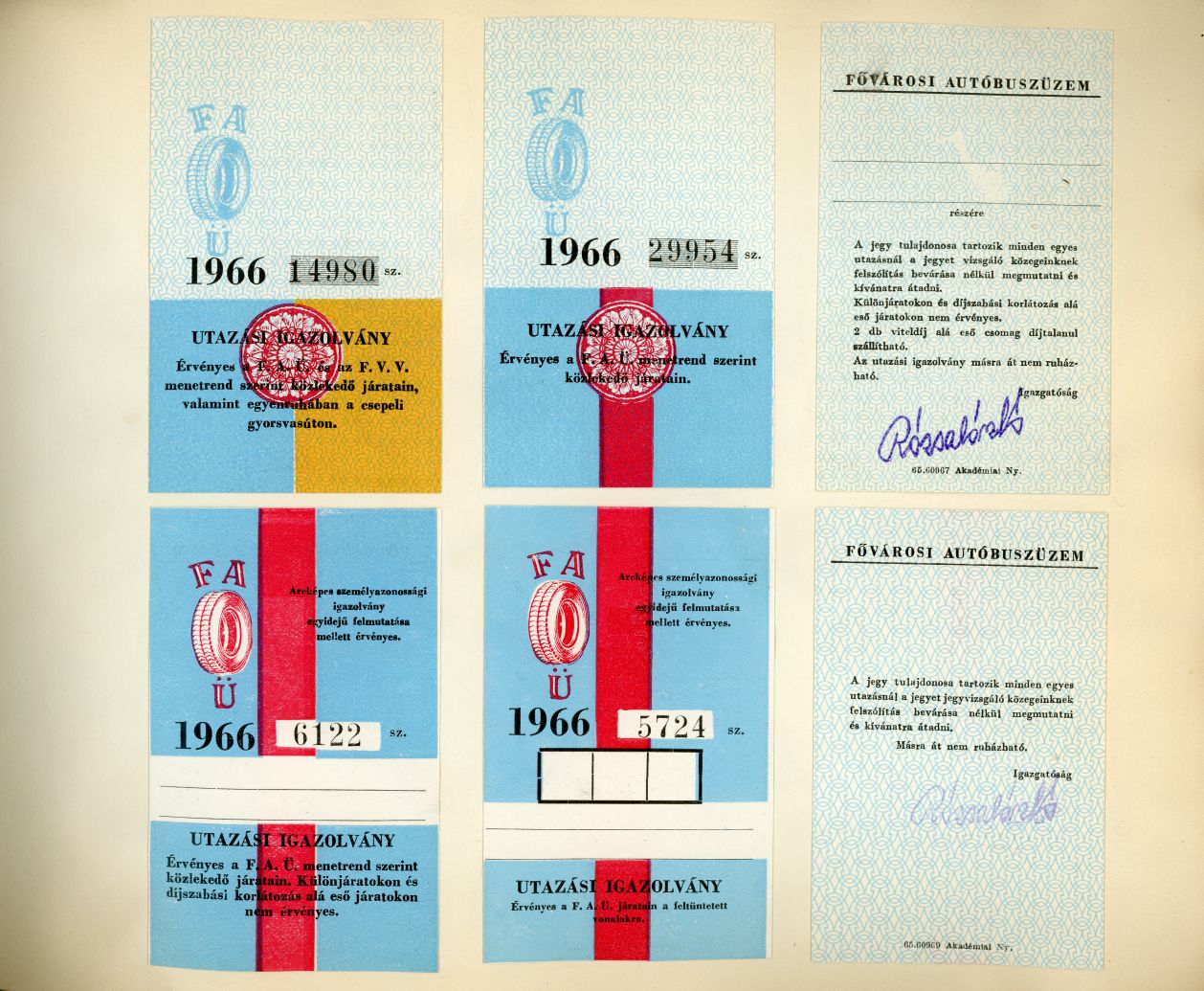
Ticket types in 1966 (Source: Hungarian Museum of Science, Technology and Transport, No.: MNJGY.2013.1.1.027)
The results were already visible after a few months: ticket sales of transport companies increased by 21 per cent. In connection with the ticket price reform, taxi prices were also raised by 15 per cent, which resulted in a slight decline in taxi traffic.
Thus, the unified ticket and pass system preceded the establishment of the unified transport company of the capital, BKV. The system, which was introduced 55 years ago, has not changed fundamentally, although there are transfer and section tickets, and the number of tickets and passes has also changed but the basic concept is essentially the same.
Cover photo: The ticket for the buses cost 1 forint 50 fillér (Source: Fortepan/No.: 25672, Collection of Local History of Ferencváros)

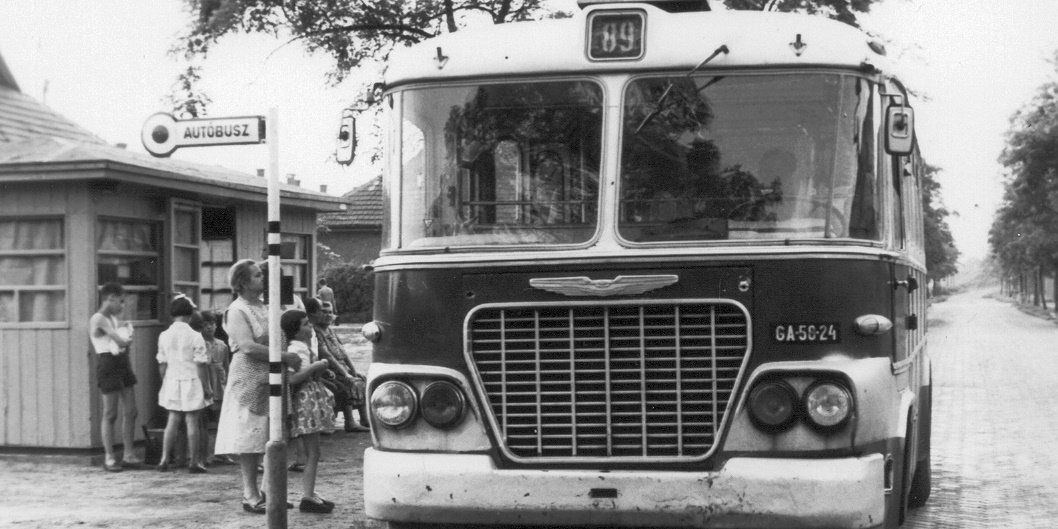


































Hozzászólások
Log in or register to comment!
Login Registration